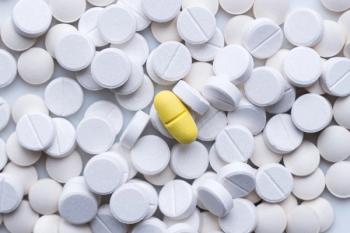
Rx Dog Therapy: How Man’s Best Friend Helps Veterans With PTSD
Service animals can help save veterans’ lives.
Q&A
Approximately 20 veterans per day die by suicide.1 Standard therapy and medications may not be enough to manage the symptoms of posttraumatic stress disorder (PTSD), but service dogs may help alleviate them.2 K9s for Warriors, the nation’s largest veteran service organization providing highly skilled service dogs to disabled veterans, has already rescued 653 veterans and 1278 dogs as of February 2021.1
The PAWS Act, introduced by Florida Congressman John Rutherford, seeks to establish a competitive grant program for organizations like K9s for Warriors to pair service dogs with veterans.3
Rory Diamond, the Chief Exectutive Officer of K9s for Warriors, and Maggie O’Haire, PhD, leader of the
Psychiatric Times: This February, the US House of Representatives reintroduced the Puppies Assisting Wounded Servicemembers (PAWS) Act, H.R. 1022, which would allocate federal funds for the training of service dogs for veterans. What kind of impact do you think this will have on the treatment of PTSD?
Rory Diamond: Passing the PAWS Act would pave the way for allocating vital resources needed to properly train and pair more service dogs with the veterans who need them most. This type of legislation would ultimately make service dogs more accessible to more veterans as an alternative to traditional medication, while helping to restore their confidence and independence.
PT: Trademark symptoms of PTSD include heightened reactions, anxiety, and nightmares. Can you explain how the service dog might help alleviate these?
Maggie O’Haire, PhD: PTSD service dogs are trained to perform a variety of tasks intended to alleviate PTSD symptoms. Many of these tasks are related to detecting signs of anxiety or distress and intervening. For example, a service dog can sense changes in an individualprior to a panic attack and nudge or lean against the individual to encourage them to refocus on the dog and the present space, thereby minimizing or preventing the panic attack. The service dog can also wake up a veteran from a disturbing nightmare to provide comfort. In our recent study of 134 veterans with PTSD service dogs, we found that veterans reported the most important trained service dog task was to calm/comfort from anxiety. They used this task on average 5 times every day and it was reported to help with 12 of 20 PTSD symptoms.
PT: In 2019, the VA reported that the suicide rate for veterans was 1.5 times the rate of non-veterans. Do you think the implementation of the PAWS Act could affect that statistic?
Diamond: Nearly 20 veterans commit suicide every day. These heroes return home feeling disconnected, unsafe, and unstable, tragically feeling like they have no other way forward. Implementing the PAWS Act would allow more of these American heroes to choose a trained service dog to help heal their invisible wounds, a proven method that’s backed by research from the US Department of Veterans Affairs (VA).
PT: Training these service animals can be expensive—costing almost $30,000. Do you think this price will decrease the number of trained dogs and therefore inhibit patients with PTSD from getting access?
Rory Diamond: Despite acknowledging a national crisis exists with the alarming rate of veteran suicide, the VA has refused to take action by covering the cost of service dogs (a proven treatment method for PTSD) under the insurance benefits that veterans have earned through their military service. Upon introducing a service dog, veterans, along with their families/caregiver(s) experience a transformational improvement in quality of life, and the VA needs to take responsibility and remove the financial barrier that precludes more veterans from receiving this benefit.
PT: K9s For Warriors pairs dogs with those having posttraumatic stress, traumatic injury, and/or military sexual trauma. Is there an ideal patient/candidate for this service? When would this be contraindicated?
O’Haire: K9s For Warriors and other service dog providers typically have an extensive application and screening process to ensure that a service dog pairing would be feasible and appropriate for both the veteran and the dog. It is important for veterans to be willing and open to bringing a new partner into their lives, including dog care, maintenance, and ongoing training. We do not yet know if there is an ideal patient/candidate for this service, but it is an ongoing area of our research. Not all veterans will be interested in having a service dog, particularly if there are allergies in the home.
PT: Can you share an example of a success story?
Diamond: We have more than 650 veteran graduates who can attest to the positive impact service dogs can have on both their emotional and physical state of mind. Each of these Warriors has their own success story, thanks to an unwavering bond they’ve built with their service dog battle buddy.
PT: Have there been any studies looking at the impact of this program? If so, could you share the results?
O’Haire: Our research group at Purdue University has conducted a series of research studies in collaboration with K9s For Warriors (see publications
The service dogs were also associated with broader improvements in quality of life. For example, veterans with service dogs who were employed missed work less often and reported less anxiety, depression, and greater satisfaction with their lives and social relationships. On a biological level, we also studied the stress hormone cortisol and found that veterans with service dogs had a cortisol level closer to that of healthy adults without PTSD. The evidence suggests that service dogs should not replace other services, but instead that they can provide a valuable addition to current evidence-based care. Some veterans tend to overestimate benefits and underestimate challenges, so it is also important for clinicians to work together with veterans to manage realistic expectations, thereby creating a maximally positive and productive experience for both veterans and dogs.
PT: Do you partner with psychiatrists/clinicians? And, if so, how?
Diamond: K9s For Warriors works in partnership with Purdue University’s College of Veterinary Medicine, and specifically Dr Maggie O’Haire (Center for the Human-Animal Bond). This partnership allows Dr O’Haire to conduct several research studies which have resulted in scientific proof of service dogs’ ability to help mitigate veteran’s symptoms of PTSD.
PT: How should practitioners get in contact with service dog programs?
Diamond: Practitioners can advise their (post 9/11) veteran patients to fill out an application with K9s For Warriors to be considered for our program:
To see more on this topic, see Dr O’Haire’s video,
References
1. K9s for Veterans. Updated February 2021. Accessed March 30, 2021.
2. Purdue University. Study shows physiological and behavioral benefits may be experienced by veterans with PTSD who have service dogs. News release. June 12, 2018. Accessed March 30, 2021.
3. Rutherford, Pappas, Waltz, Lawson, Stivers Reintroduce PAWS Act. News release. March 3, 2021. Accessed March 30, 2021.
Newsletter
Receive trusted psychiatric news, expert analysis, and clinical insights — subscribe today to support your practice and your patients.

















